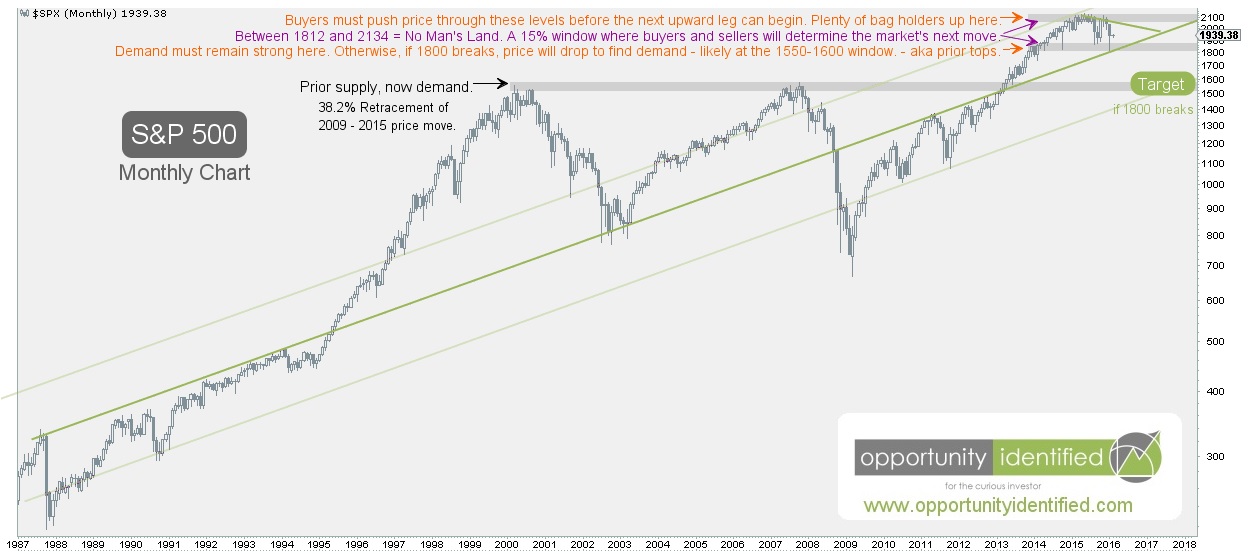As market participants, we should be taking a scientific approach when putting money to work, always assuming our positions are wrong and need to prove themselves. As part of that process, one piece of evidence we want to look at on a consistent basis is the health of the overall market. One such way to gauge market health is studying market breadth. In other words, how many stocks are actually participating in any directional move. That’s why we’re writing today about an index you might not be aware of but should be familiar with if you follow our research. This index is great at providing insight into the current condition of the U.S. stock market: the Value Line Geometric Index (XVG). This index tracks the median move of stocks within the index using the assumption that each stock has an equal amount (for example, $1,000) invested in them. The daily average move of this index is calculated geometrically (rather than arithmetically). If you want to geek out on the details, you can read more about this calculation here, page 4. In basic terms, the Value Line Geometric Index eliminates an illusion created by cap-weighted index components. Heavily weighted stocks within a cap-weighted index can pull it higher even as the majority of the stocks within the index are not following along. For example, in a cap-weighted index like the S&P 500, it’s possible for the top 100 weighted stocks to carry the index higher while the remaining 400 stocks lose value. As an investor, it might be helpful to identify when this is happening.
The last time we wrote about this Index, we noted it needed to hold and advance beyond the $500 level. Here’s the chart of the Value Line Geometric and S&P 500 Indexes from that post.
Here’s an updated chart comparing the popular cap-weighted S&P 500 Index with the lesser-known Value Line Geometric Index:
The last few weeks have been confirming evidence for our bullish market thesis. XVG held the important $500 level and advanced swiftly to all-time-highs. You read that right. This is the highest Value Line Geometric Index has been. Ever. In fact, this move is confirming a breakout of a 19-year consolidation. Note that price broke above the 1998 highs just this past December. That’s almost 20 years of going nowhere! And last week’s move was a breakout of the more recent 10-month consolidation. Check it out:
From large bases come high spaces. This move is significant and is signaling broad market participation, which is not a bearish characteristic. The last time we covered this important index was back in May. Back then, large market cap stocks were leading the S&P 500 market higher. We wrote:
…we’ll want to watch for clues from the leading sector, Technology, on whether this current run can continue. It’s a positive when economic bellwethers like Apple (AAPL), Amazon (AMZN), Facebook (FB), Google (GOOGL), Nvidia (NVDA), Adobe (ADBE), Microsoft (MSFT), and Netflix (NFLX) can lead. At the same time, it would be healthy if more sectors start to participate. If and when laggards like Energy and Financials find demand, it could signal another strong leg higher for the overall market.
What have Energy and Financials done recently? We thought you’d never ask.
In conclusion, we have evidence right in front of our eyes showing broad market participation and lagging sectors getting bid. This is healthy and normal bull market behavior. We’re not saying that Energy and Financials continue to march straight upward. Trees don’t grow to the moon. But it is significant that lagging sectors are participating and the Value Line Geometric Index is breaking out. This evidence could be signaling another strong leg higher for the overall market.
As always, you can get real-time updates and commentary about this development and many more opportunities here: @360Research
AND, you’ve got FREE access to a great tool we’ve created, The Ultimate ETF Cheat Sheet. Click this link to get your FREE easy-to-use resource guide for all your ETF needs.
Disclaimer: Nothing in this article should be construed as investment advice or a solicitation to buy or sell a security. You invest based on your own decisions. Everything in this post is meant for educational and entertainment purposes only. I or my affiliates may hold positions in securities mentioned in this blog. Please see our Disclosure page for full disclaimer.






 [original chart source]
[original chart source]








